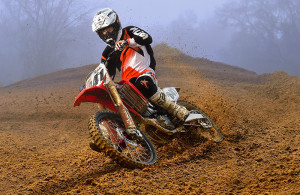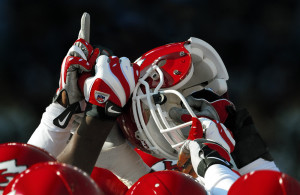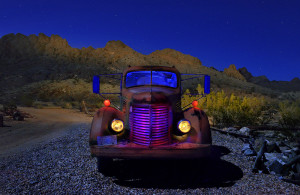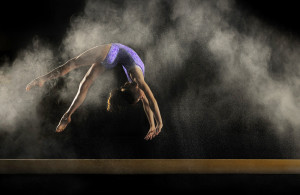2015 April WATR… Your Questions & My Answers
 Hi and welcome to this edition of Workshop at the Ranch (WATR.) Your Questions and My Answers keep on rolling in via the Contact Page. Some very technical Qs came in this month and a BIG announcement, so let’s get after it !
Hi and welcome to this edition of Workshop at the Ranch (WATR.) Your Questions and My Answers keep on rolling in via the Contact Page. Some very technical Qs came in this month and a BIG announcement, so let’s get after it !
![]()
 Image #1 Silk Flower … Nikon Df, ISO400, 1 minute 15 seconds exposure time, Nikon 24-70mm lens, WB 10,000K, Lightpainted with Stylus LED penlight by: Streamlight, Manfrotto Tripod and 410 Gear Head, SanDisk 32G Extreme Pro Flash Card.
Image #1 Silk Flower … Nikon Df, ISO400, 1 minute 15 seconds exposure time, Nikon 24-70mm lens, WB 10,000K, Lightpainted with Stylus LED penlight by: Streamlight, Manfrotto Tripod and 410 Gear Head, SanDisk 32G Extreme Pro Flash Card.
Q…Hey Dave, I just noticed in your website menu that you are running your own Lightpainting Workshop in Colorado in May 2015. Will we have any models to Lightpaint??? and some kind of big landscape to Lightpaint???
Hope so. Rick, TX.
A…Hi Rick, great to hear from you dude, YES! …we will have 2 models including the young lady in this image who is one of my favorite models to Lightpaint. This will be a “Hands-On” workshop where all participants will be making their own Lightpaintings.
The Lightpainting Workshop with Dave Black will debut May 28-30, 2015 in Loveland, Colorado. The class size will be very small and open to no more than 15 persons. We will be learning all 3 phases of Lightpainting: Table-Top Still Life, the LIVE Model, and Large Outdoor Landscape.
If we reach our class size of 15 it is very possible that Ron Taniwaki from Nikon will join us as an instructor. Also teaching with me will be Haley Hendrickson who is also the workshop director.
To see the Workshop Registration page, Daily Schedule page, and What to Bring page simply “click” Lightpainting Workshop with Dave Black in Colorado, May 28-30, 2015 on my Website Home page Menu.
Come join me and learn to Lightpaint! See you at the Lightpainting Workshop May 28-30 in Loveland, Colorado Rick.
![]()
 Image #2 Moto Fog …Nikon D4s, ISO500, 1/1000 at f8, Nikon 70-200mm G VR Zoom lens, WB 6250K, 2 Nikon SB-910 Speedlights (each at Full Power), Nikon SU-800 Commander, SanDisk 32G Extreme Pro Flash Card.
Image #2 Moto Fog …Nikon D4s, ISO500, 1/1000 at f8, Nikon 70-200mm G VR Zoom lens, WB 6250K, 2 Nikon SB-910 Speedlights (each at Full Power), Nikon SU-800 Commander, SanDisk 32G Extreme Pro Flash Card.
Q…Dave, Thank you for your class on KelbyOne about using flash for sports action and portraits www.kelbyone.com . I am going to shoot some HS Seniors who are motocross kids and your training on how to do that is very valuable. Just starting out using high speed sync. Any suggestions you may have would be very! Valuable and greatly appreciated. Thanks and once again thanks for your gracious training! Thanks. Andy
A…Hi Andy. Glad you are enjoying my 3 Ways to Light Up Sports video class on KelbyOne www.kelbyone.com Your question is a great one…(NOTE: Let me remind everyone that this example image was made during a commercial shoot, not a motocross competition event. The rider knew exactly where I am standing and where my Speedlights are located.)
High Speed Sync is a term and technology that Nikon uses when enabling their flash systems-cameras to use shutter sync speeds faster than 1/250.
Nikon’s High Speed Sync for their SB series of Speedlights is activated in the camera’s Custom Settings menu under “e” Bracketing/Flash: “e1” Flash Sync Speed…set this at 1/250 s (Auto FP)
Here are the steps I used to make this Motocross image using Nikon Speedlights with High Speed Sync.
First…I composed the scene by selecting an area on the course where my athlete would achieve a strong action position, and I can position myself and my Speedlights safely out of the path of the athlete. Then I made a good Manual exposure using the camera’s meter, or I could also use Aperture (or Shutter) Priority mode.
Second…With my good exposure established I will then “purposely” under expose the scene shot by -1.5, …or if you are using Aperture (or Shutter) Priority you would dial down the EV by -1.5. Now the scene is darkened by -1.5 stops.
Third…At this point I like to have one of the athletes stand in the exact place where the action will occur…a “stand-in” so to speak. I make some TEST shots of him using my Speedlights to determine the best position for my Speedlights to be placed Off Camera …in this case my assistant Julio is standing about 20 feet away and at a 3/4 angle to the rider. Julio is holding 2 Nikon SB910 Speedlights set in REMOTE mode with the Speedlight’s sensor facing me. This lighting configuration forms a “TRIANGLE” with the 3 points being 1.The camera, 2.The subject, and 3.The Speedlights.
Four…I will use a Nikon SU-800 Commander on the hot-shoe of the camera to REMOTELY trigger the 2 Nikon SB-910 Speedlights that are about 30 feet away from me. I like to use Manual, but you can also use TTL. I start making TEST shots with the Speedlight Manual power setting of 0.0…which I call the “baseline” power output. If the picture of my stand-in is too dark then I increase the power output to +1, +2 etc, …always making a TEST shot with each new power output setting until my subject is illuminated sufficiently. With my -1.5 underexposed picture my “Triangle” lighting configuration usually requires +1.5 power output or more from each Speedlight to illuminate my action subject.
Five… I’m ready for the final element…the ACTION…Bring on the Motocross rider.
I hope this “step-by-step” guideline helps you Andy. Remember, no lighting “formula” works in every situation, but what I’ve suggested will get you very close to a good solid Off Camera Lighting scenario.
Adios. Dave
![]()
 Image #3 NFL Game Day … Nikon D4, ISO1600, 1/2000 at f8, Nikon 200-400mm G VR Zoom lens with TC14E 1.4x Teleconverter (650mm total), WB 6250K, Hand Held-No Monopod, SanDisk 32G Extreme Pro Flash card.
Image #3 NFL Game Day … Nikon D4, ISO1600, 1/2000 at f8, Nikon 200-400mm G VR Zoom lens with TC14E 1.4x Teleconverter (650mm total), WB 6250K, Hand Held-No Monopod, SanDisk 32G Extreme Pro Flash card.
Q … Hello Dave, I am a student looking for a direction to take my life. i was very interested in photography and art at school which i really enjoyed and achieved high grades. As an enthusiastic sportsman i was considering merging the two and becoming a sports photographer. Would you recommend this and do you have any advice.
A…Hi Gavin. The road to being a professional photographer who makes their entire living from their craft is not usually achieved overnight. If you are just entering college you should look to a school that has a good photography program and perhaps a business minor. Assisting or being an apprentice to a local sports photographer is a great way to learn the trade as well. Some assistants make good money assisting someone until they are ready to set out on their own business.
Just so you know, the notion that all a sports photographer does is go to games, take pictures, and make tons of money is far from accurate. There are a lot of sports photographers out there….many work for free just so they can attend a football or baseball game. I feel that there is always room for photographers who make great images.
Hard work, long hours, computer skills and business sense all are just as important as photographic skills if one is to “make it” in today’s sports photography market place.
Do I recommend being a sports photographer….YES, absolutely! It’s the greatest job on the planet. Be ready to work hard to achieve this goal. But once you do, you are truly on top of the world every time you go to the Ball Park or Stadium.
Best with it. Dave
![]()
 Image #4 Cosmic Truck … Nikon D800, ISO2500, 20 seconds at f13, Nikon 24-70mm lens, WB 4000K, 3 Stylus LED penlights by: Streamlight each Stylus has a colored LED bulb (Blue, Red, Yellow), 1Brinkmann Max Million III portable spotlight, Manfrotto Heavy Tripod with 410 Gear Head, SanDisk 32 G Extreme Pro Flash Card.
Image #4 Cosmic Truck … Nikon D800, ISO2500, 20 seconds at f13, Nikon 24-70mm lens, WB 4000K, 3 Stylus LED penlights by: Streamlight each Stylus has a colored LED bulb (Blue, Red, Yellow), 1Brinkmann Max Million III portable spotlight, Manfrotto Heavy Tripod with 410 Gear Head, SanDisk 32 G Extreme Pro Flash Card.
Q…Hey Dave ! It’s Harry from London. Just saying Hi and just Thanks ! for being such a good KelbyOne Trainer. I’m a musician first and a photographer second. Your Lightpainting series and Speedlight stuff is some of the best tutorials I’ve ever seen. Can’t seem to find you on Twitter??? Keep up the great work and if you ever get to London I’ll try and catch one of your workshops LIVE! Stay Calm and Carry On.
A…Hi there Harry, sound like all is going well in London. Thanks for the encouraging words…so glad you are enjoying my Lightpainting and Speedlight teaching videos on KelbyOne www.kelbyone.com
You are correct, I’m not on Twitter. However, I am on Instagram and really love it. You can find me @daveblackphoto and I usually put images up 6 days a week.
Kind of a mix of Sports and Speedlights, Lightpainting and Travel. Sometimes I’ll do a RETRO sports series from my archives, and several times I’ve taught short PHOTO lessons on a variety of photo techniques.
So “Come Follow Me” as they say on Instagram @daveblackphoto
This “Cosmic Truck” was made using a variety of lights, including Moon Light which gave an overall cool cast of light on the ground. I used 3 Stylus LED penlights that each had colored LED bulbs to illuminate the interior (blue), the Head Lights (yellow), and the Turn Signal Lights (red).
I also used a Max Million III spot light by Brinkmann to illuminate the mountains in the background. It was a fun time making this Lightpainting.
Cheers. Dave
![]()
 Image #5 Gym Fantasy Nikon D3x, ISO400, 1/250 at f 8, Nikon 70-200mm lens, WB 6250K, 2 Elinchrom 600RX Strobes (1 in a Soft Box and 1 with a 20 degree Grid), 2 Manfrotto Lightstands at opposite ends of the Balance beam, Nikon SU-800 Commander, SanDisk 16G Extreme Pro Flash Card.
Image #5 Gym Fantasy Nikon D3x, ISO400, 1/250 at f 8, Nikon 70-200mm lens, WB 6250K, 2 Elinchrom 600RX Strobes (1 in a Soft Box and 1 with a 20 degree Grid), 2 Manfrotto Lightstands at opposite ends of the Balance beam, Nikon SU-800 Commander, SanDisk 16G Extreme Pro Flash Card.
Q…Great website and great photography. I know you must be extremely busy, but if you could answer my question, I’d be much appreciative. I’m a big fan of yours. I have a daughter in gymnastics and I want to take some pictures of her during practice. Is it dangerous for her if I use a studio strobe or speedlight to “freeze” the action during her routine? Thanks a million. Cheers, Kevin
A…Hi Kevin. Thanks for your very kind words…and really glad that you like the NEW website.
Gymnastics is one sport that doesn’t allow any Strobe or Speedlight Flash photography during competition. This “rule” seems to hold true no matter what level of the sport you are photographing.
However, using a Speedlight or Strobe during practice session is usually up to the coach and athlete…and perhaps other athletes training in the same area of the gym. If coach and athletes are good with it, then make some great pictures with your lights.
But let me also answer the deeper question…Does Flash from a Speedlight or Strobe lighting effect the athlete in any way while performing?
Speedlights in High Speed Sync mode or Strobes in HyperSync mode would be the best solution. With these two systems you are able to combine the available ambient and the flash together. A combination of ambient and slight illumination works well rather than a “BIG FLASH” that might interrupt the athlete’s concentration.
Speedlights or Strobe systems that do not use High Speed Sync or HyperSync will require a “Flash” that is at least 3 stops brighter than the available ambient light of the gym. This can be disruptive to a young athlete even during a practice session. A missed re-grasp of the bar or a slip on the beam can result in a possible injury…and no picture is ever worth that.
This image is about 6 years old and does not make use of High Speed Sync. My Elinchrom 600RX strobes have a very fast “Flash Duration” of 1/1600 of a second. It is the Strobe’s 1/1600 flash duration that actually freezes the action, rather than the camera’s Shutter Sync Speed of 1/250.
This young gymnast was not training but was performing exclusively for the photo shoot. We had her coach assist her on the first few “Back Handsprings” while making “FLASH” pictures each time she was air borne.
Once she (and her coach) felt comfortable with the Strobe going off I was able to make some great action shots of her. We also filled the air with a curving “Back Handspring” pattern of chalk in the air. This added feature helped make a unique picture for the client.
Hope that this helps answer your question Kevin. Adios. Dave
![]()
Well, another bunch of great questions. Please keep sending them in via the Contact Dave page on the website. I’ll be answering more questions next month. Until next month my friends here on Workshop at the Ranch…Adios. Dave


